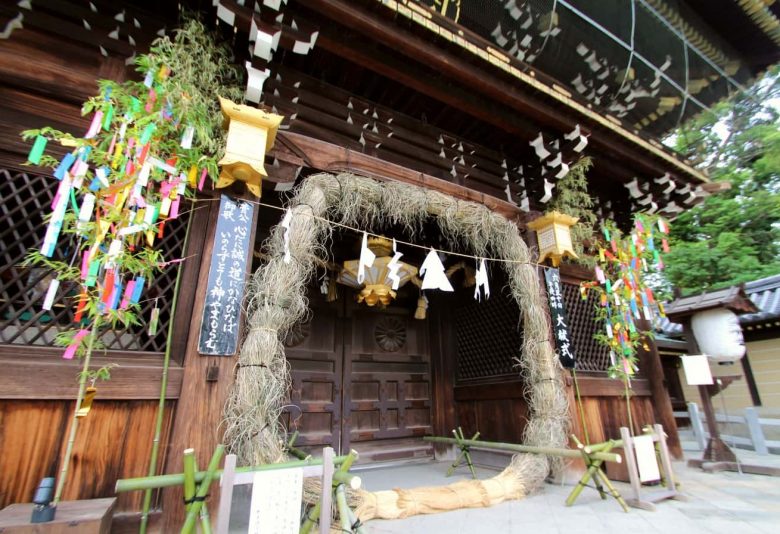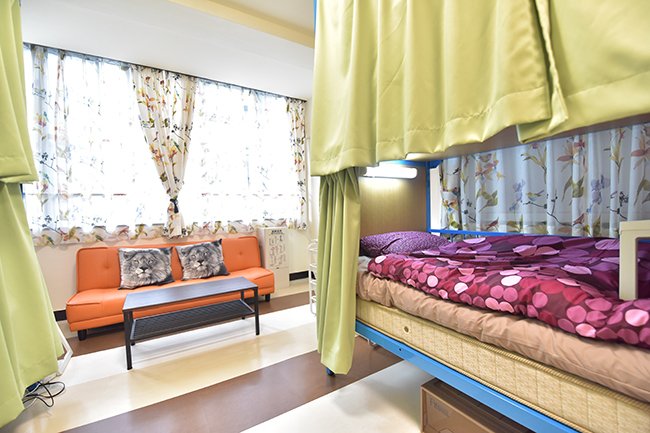
Hidup dalam tradisi Jepang: Chinowa kuguri
Musim panas telah tiba dan seiring dengan naiknya suhu dengan sedikit awan kelabu mengumumkan datangnya musim hujan di Jepang, kami siap menyediakan akomodasi yang nyaman dan nyaman di Tokyo dan juga di Kyoto, untuk pelajar bahasa Jepang asing, mahasiswa, magang, penelitian akademisi dan pelancong Liburan Kerja untuk mendapatkan tempat yang bagus untuk menikmati sepanjang tahun ini.
Salah satu aktivitas yang dapat dilihat di sekitar kota sambil berjalan melalui jalan-jalan di Jepang adalah cincin rumput besar yang dipajang di kuil. Tapi, tentang apa ini?
Kami menemukan diri kami, sekali lagi, dihadapkan dengan aspek khas lain dari kehidupan di Jepang. Salah satu yang mungkin tidak disadari oleh wisatawan asing, pelajar, dan profesional yang bekerja. Jadi di sini kami ingin memperkenalkan secara singkat tentang tradisi musim panas yang aneh ini.

Saat berjalan pulang setelah seharian bekerja di Tokyo, atau setelah kelas yang sangat aktif di sekolah atau universitas bahasa Jepang di Kyoto, berjalan melewati kuil bukanlah hal yang aneh. Tetapi sesuatu yang sangat berbeda adalah mendekorasi mereka selama bulan pertama musim panas. Sebuah cincin besar terbuat dari rumput, cukup besar untuk dilihat sebagai semacam portal.
Yah, itu bukan pintu khusus untuk keajaiban budaya Jepang yang lebih mistis, tetapi bagian penting dari ritual musim panas di Jepang yang disebut "nagoshi no harae". Khususnya, lingkaran besar ini dikenal sebagai "chinowa kuguri".
"Chinowa" adalah nama cincin itu sendiri yang berarti "roda rumput besar", sedangkan "kuguri" berasal dari kata kerja kuguru dalam bahasa Jepang, yang berarti melewati. Ya, ini adalah ritual berjalan melewati ring, tapi itu bukan portal.
Tradisi membuat cincin rumput besar ini berasal dari legenda bahwa menempelkan cincin kecil rumput di pinggul dapat menangkal penyakit dan kekuatan jahat. Ini juga diyakini sebagai efek melewati chinowa.
Namun, seperti kebanyakan ritual, ada cara khusus untuk melewatinya. Itu harus dilakukan dalam angka delapan, seperti yang ditunjukkan pada gambar di bawah ini.

Langkah-langkahnya adalah:
1. Hadapi chinowa dan buat busur. Kemudian mulailah melewatinya dengan kaki kiri dan berjalan ke kiri untuk menghadap chinowa lagi.
2. Menghadapi chinowa lagi, membuat busur dan mulai melewatinya, tapi kali ini dengan kaki kanan Anda. Kemudian belok kanan dan berjalan di sekitarnya untuk menghadapinya sekali lagi.
3. Sekali lagi, menghadap chinowa, buat busur dan berjalan melaluinya dengan kaki kiri Anda terlebih dahulu, seperti yang pertama kali. Belok kiri dan hadapi chinowa untuk terakhir kalinya.
4. Membungkuk di ring untuk terakhir kalinya dan berjalan lurus melewatinya (tanpa berbelok ke kiri atau kanan) dengan kaki kiri terlebih dahulu. Sekarang Anda bisa pergi dan berdoa di kuil.
Setiap kali melewati ring memiliki arti khusus. Yang pertama untuk mengusir kejahatan, yang kedua untuk pemurnian, yang ketiga untuk perlindungan dan yang terakhir untuk kebahagiaan. Oleh karena itu, yang terbaik adalah mengingat pikiran-pikiran ini saat melewatinya setiap saat.
Masih banyak tradisi, adat istiadat, dan keingintahuan kehidupan di Jepang selama musim panas, tetapi lebih baik daripada membacanya adalah hidup dan mengalaminya secara langsung. Untuk itu, jika Anda merencanakan masa tinggal Anda di Toyko atau di Kyoto musim panas ini, atau kapan saja sepanjang tahun, Anda selalu dapat mengandalkan dukungan dari tim multibahasa kami. Hubungi kami kapan saja dan mari mulai pengaturan akomodasi Anda di Jepang dalam bahasa Anda dan kami adalah tim pelancong yang telah siap membantu Anda.







